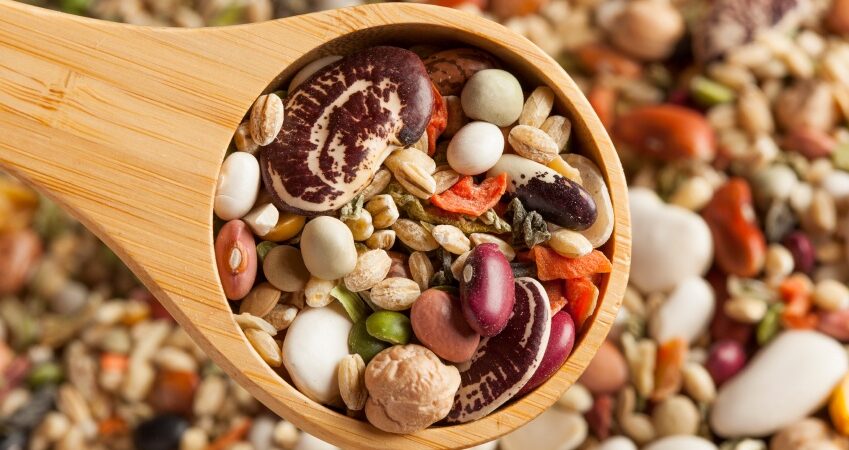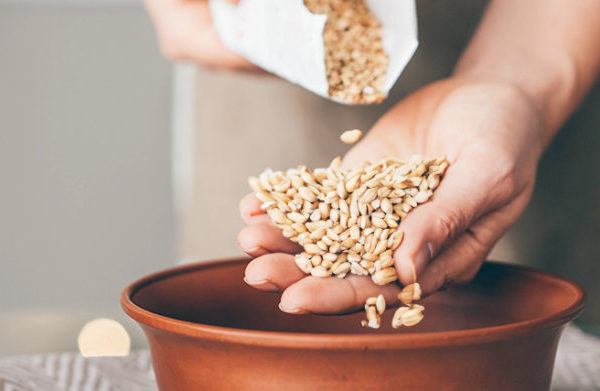
SHA Magazine Healthy Nutrition
Vegetable proteins as a quality source of proteins
Vegetable proteins are a high quality source of proteins. Traditionally, they have been used in the bigest civilizations in combination with whole cereals as a part of the daily routine. They are cleaner and more digestible than animal proteins and they don’t produce toxicity in the intestines.
Nowadays, there is controversy about the vegetable proteins because they aren’t considered complete. In more depth, we can see that there are proteins that contain all the essential amino acids that the body needs to synthesize them and others that are deficient in some amino acid. Generally, animal proteins are complete while vegetable proteins have limited amino acids: lysine missing in whole cereals and nuts, cysteine and methionine in legumes. This is the origin of the controversy of the quality of vegetable proteins.
However, recent studies claim that there are full essential amino acids in some vegetable proteins:
- Chickpeas, soy, beans and azukis.
- Pseudocereals: quinoa, buckwheat, amaranth. They are considered as cereals so they have a higher proportion of carbohydrates than proteins. Although they contain all essential amino acids, the quality of protein is still small.
- Pistachios and sunflower seeds.
- Spirulina: it almost doesn’t have iodine because it’s a lake seaweed. It contains a high amount of proteins.
In fact, traditionally we tended to combine whole cereals with legumes (rice or couscous with chickpeas, rice with azuki, corn with beans, etc.) because with the mix all amino acids are obtained. In the collective unconscious, it was known that the mix of cereals and legumes was a very digestive combination and that it provided health.
Thus, whether using these vegetable proteins shown as complete or the combination of legumes and cereals, there is no reason to suffer deficiency if we don’t eat animal proteins.
Other vegetable proteins
- Tofu: derived from the yellow soybeans, it has a delicate flavor and a light texture. It is obtained from soy milk that is curdled with nigari (natural magnesium) and drained and pressed into blocks afterwards. It is very low in fat, it doesn’t have cholesterol and is rich in calcium. It’s very important to cook it first (around 10 minutes, more time in case of difficult digestion), boiled with some salt seasoning (soy sauce), ginger, kombu, etc. to make it digestible. Unless it’s cooked in the oven or in a very long cooking. In this case you won’t need precooking. Being a very soft flavor, in the kitchen we will give consistency by using salty seasonings and spices or herbs as oregano or turmeric. If we use smoked tofu, pre-cooking is not required and it can be used directly in a light cooking, and grilled.
- Tempeh: from Indonesia, it is also made from soybeans, partially cooked and fermented. In addition of being rich in proteins and not having cholesterol, it contains digestive enzymes produced during fermentation. It’s especially suitable for women and for weak intestines, because it’s more digestible than legumes due to fermentation. It’s important to cook it for at least 10 minutes, since it’s a product that is not fully cooked.
- Seitan: is the wheat protein, wheat gluten, separate from starch and bran through mixing, washing and cooking. It’s the most similar to meat vegetable protein due to its texture, color and flavor. It can be used as a substitute for meat in its many versions, since it’s very versatile. It’s very rich in proteins and very restorative.
Now that you know the vegetable proteins in its different forms, dare to incorporate them into your eating routine as part of a healthy and balanced diet!





